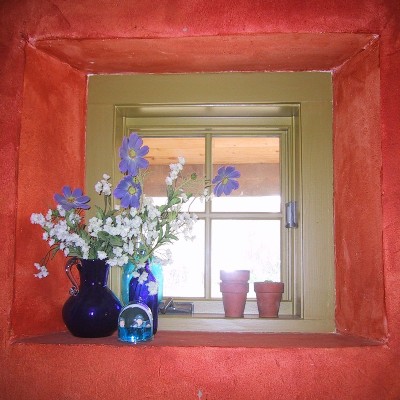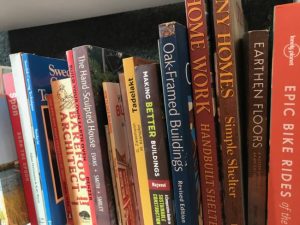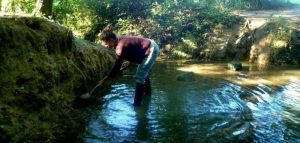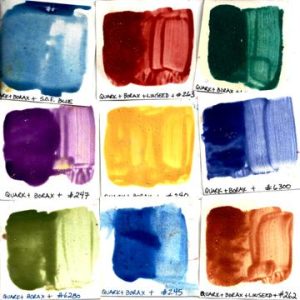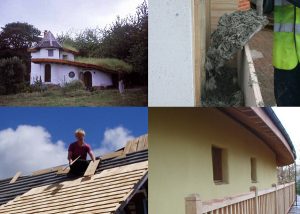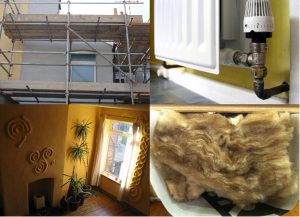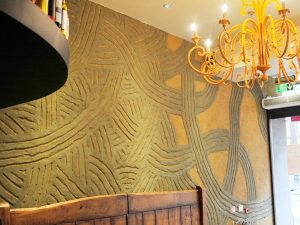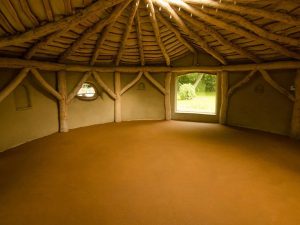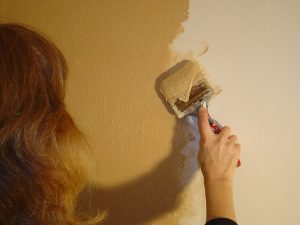Natural builder Sigi Koko shares her tried and tested method of making natural non-toxic paint from clay.
The particles of clay are like mini suction cups, which makes clay a superb sticky binder. By sticky binder, I mean you have a great way to put pigment (paint) on a wall and it’s completely natural and non-toxic. This clay paint recipe can be made from finely sifted clay soil or powdered potter’s clay. If you use clay soil, test it first to determine the proportions of clay to sand, and adjust the recipe below accordingly. You can watch our video on how to test your soil for clay content below.
This clay paint recipe has an additional binder that helps prevent the paint from being dusty once it dries. This is in the form of wheat paste, which is made simply by boiling flour and water. Wheat paste can also be used as a glue. (When we were kids, we used it for a variety of projects, from paper mâché to installing wallpaper.)
Clay paint recipe
Makes a paint with a thick, opaque finish for absorbent wall surfaces, so ideal over clay plasters or smooth cob, covering approximately 150 square feet.
- 1 gallon* water
- 4 quarts** of powdered clay
- 2 quarts of fine sand
- 1 quart of wheat paste (see recipe below)
- Pigment, whiting, mica, or chopped straw as desired
*1 US gallon = 3.79 UK litres or 6.66 pints
**1 US liquid quart = 0.95 UK litre or 1.67 pints
Method:
Mix all ingredients together thoroughly, with a large whisk or a paint mixer attachment on a drill (or similar). The final consistency should be between heavy cream (before it is whipped) and yoghurt. Apply thickly with a good bristle brush. When leather hard (slightly firm), smooth the surface by buffing with a damp tile sponge. Rinse the sponge frequently. As an (optional) final surface treatment, buff with a very flexible Japanese trowel or polished stone, or with a dry cloth.

A note on colour:
You can choose a clay that is the colour you want your paint to be i.e. a rusty orange clay will make rusty orange paint. Or you can use a white base clay and add any natural pigment to achieve any variety of colours, from earthy shades to vibrant colours.
Wheat paste recipe
To make approximately 5 cups worth of a binder to be added to clay paint (above).
Bring 1 quart water to boil in a non-aluminium pot. Meanwhile, mix 1 cup* of flour with 1 cup** of cold water until smooth and lump free. (If you can’t get it lump free, run it through a strainer.) When the water in the pot is boiling, slowly add in the flour/water mixture, stirring constantly. Bring it back to almost a boil, stirring constantly, until the mixture thickens. Remove it from the heat and allow to cool completely. The top will form a skin as it cools. You can prevent this by stirring it as the mixture cools, or by putting a piece of clingfilm against the surface as it cools. Otherwise, simply peel the skin off before using the wheat paste. Make wheat paste within a day or two of when you will use it. It will go rancid after a few days (sooner in warm weather) and then it is not usable.
*1 US cup of flour = 120g of flour or 110g sieved flour
** 1 US cup of water = 240ml
Find the original article here on Sigi’s Build Naturally blog.

About the author
Sigi Koko is the principal designer at Down to Earth Design, which she founded in 1998 to help her clients manifest their dreams of living in a natural, healthy home. She also teaches natural building workshops that empower her clients to contribute creatively during the construction of their own home. You can find out more about her work on her website and blog.

